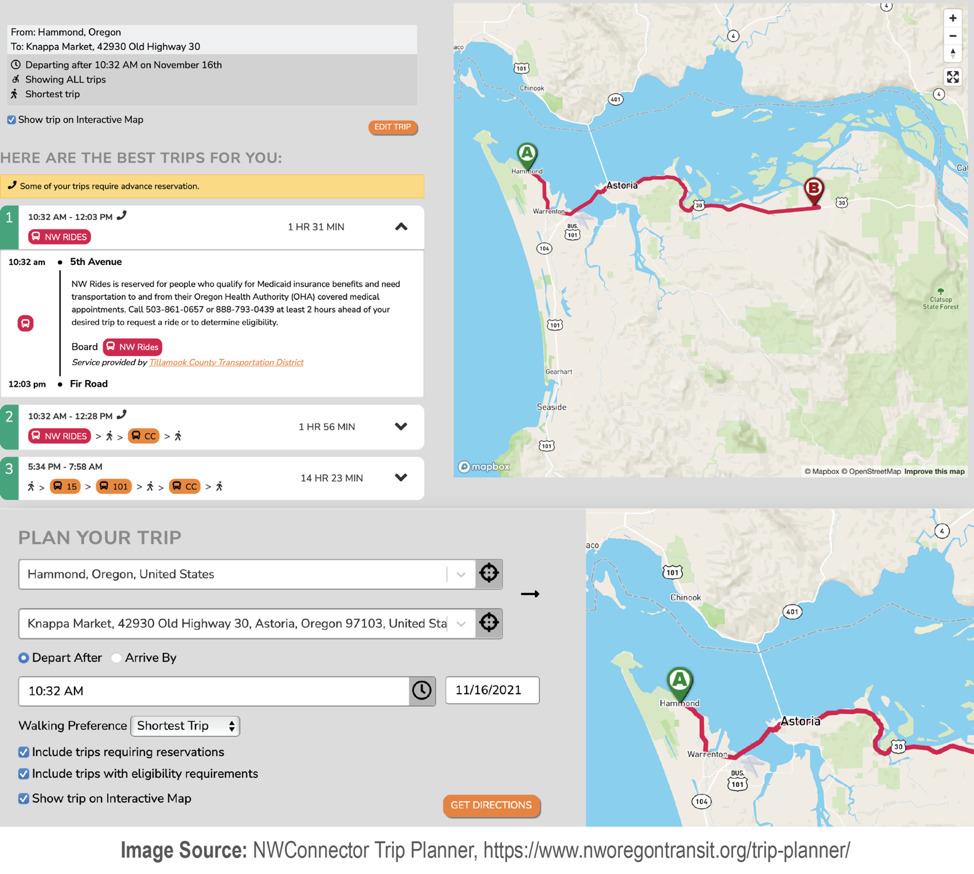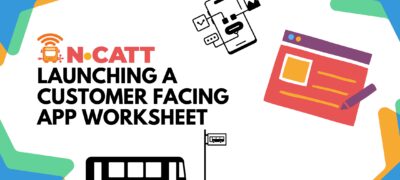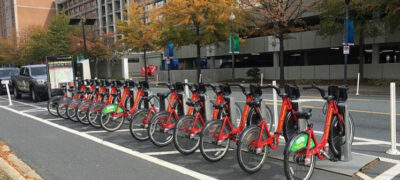Executive Summary
This document was prepared for CTAA by Civic Sphere as part of the N-CATT cooperative agreement between CTAA and FTA.
The Guidebook opens with an introduction to the concept of the complete trip in Chapter 1, explaining its components and providing an overview of related concepts including Mobility as a Service and One-Call/One-Click systems. The complete trip “synthesizes aspects of a person’s trip from the time the individual begins to plan the trip, to when he or she leaves the originating location when starting a journey, to the doorstep of the final destination,” as defined in the National Center for Mobility Management’s (NCMM) “The Complete Trip: Helping Customers Make a Seamless Journey.” The concept centers on the customer experience of individuals within the mobility system, treating each trip as a unique event that takes into account how the person interacts with various aspects of the trip. These interactions have physical aspects, such as the presence of a bus stop or a bike route in a person’s surroundings, but the interactions are psychological as well. Making complete trip-related improvements to the mobility system involves considering both of these aspects.
Chapter 1 goes into detail on how the complete trip can be broken down into individual trip segments based on trip milestones such as evaluating options, selecting an option, departing from the origin, entering/beginning use of the vehicle, exiting/ending use of the vehicle, and arriving at the destination. When strategizing improvements for the complete trip, professionals should consider the customer experience with the individual segments, the customer experience with the milestones, and how all of these parts work together for the complete trip. Factors influencing the feasibility for individuals to take certain journeys are explained; these fall into two categories: personal requirements and design of the surrounding environment. Personal requirements differ widely from person to person, especially due to considerations related to age and disability. The design of the surrounding environment can either help or hinder the customer experience, depending on an individual’s personal requirements. The highlighted projects at the end of the chapter include projects focused on the physical aspects of the complete trip primarily, while highlighted projects in subsequent chapters focus mainly on digital aspects of the complete trip; the complete trip requires both physical and digital improvements. Focusing on digital improvements alone may run the risk of enabling problematic physical aspects to remain in place, which would be counterproductive in the larger picture of the complete trip.
Chapter 2 provides an overview that differentiates among related, but different, terms—trip planning vs. trip planner vs. trip plan—and explains how trip planning is often integrated with trip booking and trip payment within digital tools. In addition, key topics such as General Transit Feed Specification (GTFS) data and extensions, Open Trip Planner software, and on-demand transit/microtransit are detailed in Chapter 2 in preparation for the highlighted projects featured later in the chapter. In addition to the highlighted projects, transit agency initiatives that are important to consider for the complete trip are listed and explained. These initiatives include practices for using multiple tools together, innovative procurement processes, and embarking on GTFS data creation and maintenance.
In Chapter 3, best practices for the complete trip are summarized including 1) prioritizing customer input, 2) defining collaboration roles for various actors, 3) considering governance topics early, and 4) leveraging feedback loops between infrastructure types. Chapter 4 serves as an instructive chapter, building off of the information provided in Chapters 1-3. The chapter opens with two key topics to keep at the forefront when pursuing a complete trip-related effort—the overall aims of the complete trip in general and the shortcomings of digital trip planners specifically. A three-step approach for providing digital tools in order to improve the complete trip is provided: (1) clarify challenges related to digital tools for the complete trip, (2) consider potential tactics to address digital challenges, and (3) plan for providing digital tools. The Guidebook concludes with worksheets to guide the reader in the process of applying the information shared in Chapters 1-4 to their own unique situation.



